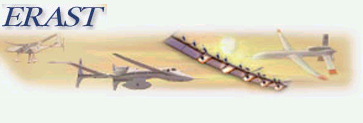By John Allmen
Background
In our zeal to solve problems in new and innovative ways, project managers must be prudent not to allow requirements creep or design solutions to bankrupt the whole project. This is why I encourage all project managers to know when and how Better becomes the expensive enemy of Good Enough. By no means is this intended to sound like a battle cry for mediocrity. Just be aware that making something ‘Better’ can become the enemy of ‘Good Enough’ when ‘Better’ has a systematic negative impact on project cost and schedule.
During NASA’s austere times, we have to be aware of all of our tools for successfully managing requirements creep, budget and schedule. Design trade-offs and R&D are important but must be managed against solid requirements. Knowing what is good enough should be understood at all working levels of the project. A requirement is intended to tell you when you’ve finished your job on a particular aspect of the project: good enough. Go for Better if you know you can afford to, but heed this advice: “Maintain sight of the original requirement and its original budget allocation as you make better.”
Procedures
- Differentiate your goal from your requirement. Your requirement is your performance floor, your goal the ceiling.
- Identify the risk involved in pursuing the goal and determine how you are going to address it. For instance, pose the goal to your engineers and proceed beyond the requirement only when they can explain how to minimize the risk in reaching the goal.
- Once you are satisfied that the risk is manageable, establish a separate budget and schedule for addressing the goal.
- Once you meet the requirement, and if there is still time and funding available in what you have set aside, then decide whether you still want to try and reach the goal. Realize that it might be prudent to spend those resources on some other part of the project.
Example
One of the requirements for the 40×80 Aeroacoustic Modification Project at NASA/Ames Research Center consisted of adding a 48-inch deep acoustic liner that could provide up to 90% absorptivity over 80-20,000 Hz in a 300-knot wind tunnel environment. The only problem was no one had ever tried to do this before, so the project had to develop an entirely new and inventive way of addressing this unique requirement. I explained to my boss that this was going to be a difficult problem to solve, and I made it clear that I was not sure yet how we could do it.
A separate budget and schedule was established to develop the new liner. R&D, design studies and trade-offs were made to successfully accomplish the requirement in the development phase. Development included full-scale component studies, a full-scale prototype installed in the wind tunnel, development of shop fabrication techniques and in-plant surveys of fabricators who could perform the work. Using the philosophy of ‘better is the enemy of good enough,’ the project intentionally ended development and declared the liner configuration “good enough” when sound attenuation and aerodynamics met the performance floor with a minimum of 5% or more margin on acoustic and aerodynamic requirements.
The project had another opportunity to evaluate better and good enough for the acoustic liner when the fabrication contractor ran into production problems. Once again this key principle was applied to the fabricator’s production processes and what was “good enough” for the acceptable performance of the delivered product. By determining which of the fabricator’s processes were good enough and which did not have to be made better, reliable trade-offs for manufacturing tolerances and acoustic performance were made to provide an outstanding product that continued to meet the performance floor.
This technique was used on many aspects of the project to help engineers at all working levels. It became a working motto to successfully maintain performance that met requirements, manage cost against the performance goals, and maintain schedule for successful project completion.
“Better is the enemy of good enough” is not the only tool a project manager should use to manage a successful project. It is, however, a means of focusing all team members to comfortably finish a task and move on to the next.
Search by lesson to find more on:
- Requirements








